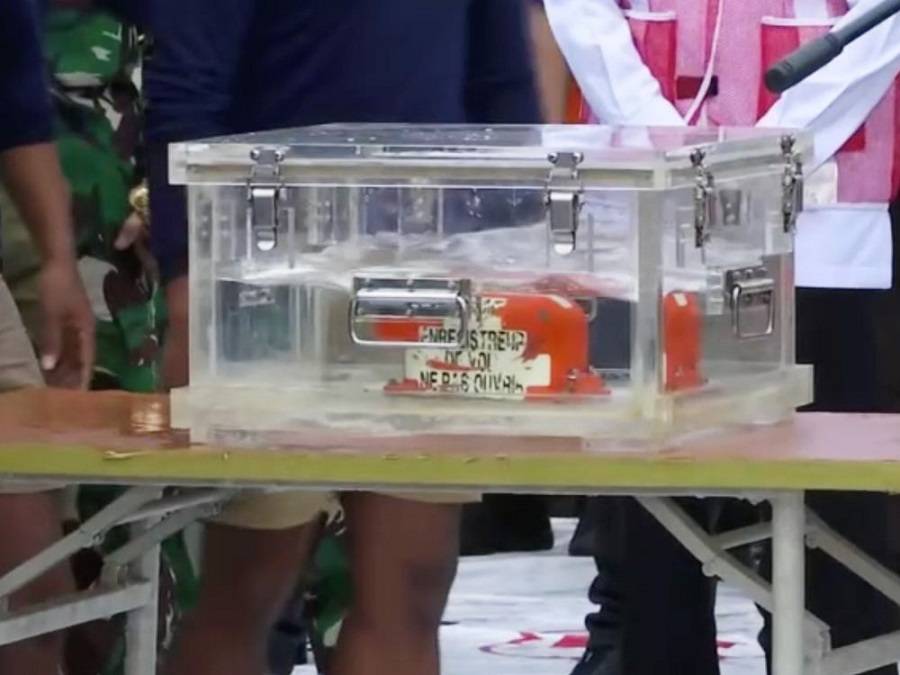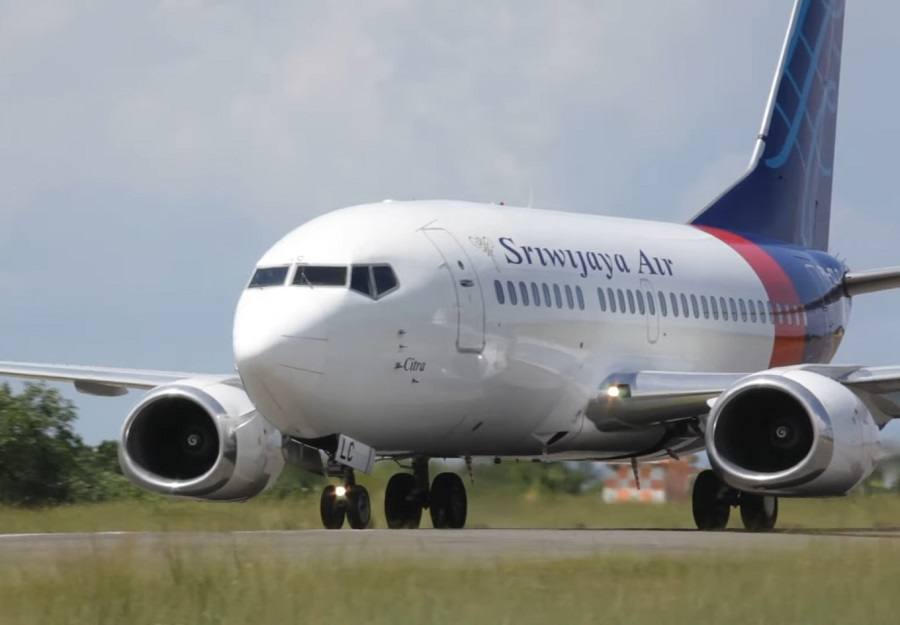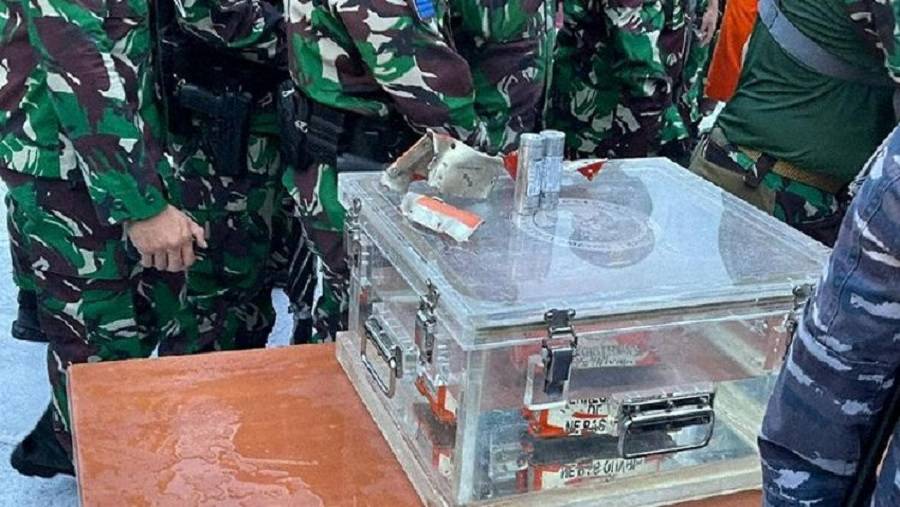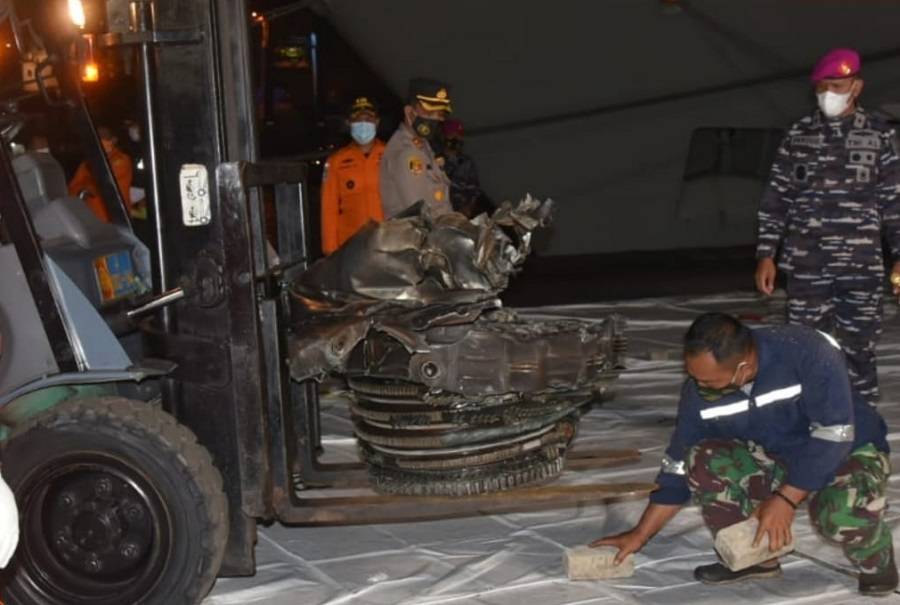The first black box of the crashed Sriwijaya Air Boeing 737 has been recovered and handed over to the Indonesian investigators. This article covers this and all updated details in the tragic crash.
Crews had located their positions two days earlier, but could not recover them. And today, three days after the tragic crash of Sriwijaya Air, the first of the two black boxes is in the hands of KNKT. This is the National Transportation Safety Commission, the air accident investigation authority in Indonesia.
The aircraft, flight SJ-182, had departed from Jakarta airport on the 9th of January, at 14:36 local time (07:36Z). After getting clearance to climb to FL290, it climbed through 10,900 feet MSL. Previously it had deviated from its expected heading, so ATC queried the pilots accordingly. Immediately afterwards, it appears that the aircraft lost over 10,000 feet in less than a minute. Sriwijaya’s black boxes hold the details of this mystery.

It quickly became clear that there could be no survivors. The aircraft had 62 people on board. Of these 6 were the active crew and 6 more were deadheading crew. There were 7 children and 3 infants among the 50 passengers. Recovering the remains of the passengers and crew is the first priority of the Basaranas (search & rescue), ahead of Sriwijaya’s black boxes.
Sriwijaya Air’s Black Boxes
The first recovered black box is the Sriwijaya Air Flight Data Recorder (FDR). Basaranas handed it to KNKT in Tuesday evening (local time). Authorities estimate it will take 2 to 5 days to recover its data. Of course analysing the information will take considerably longer.
Indonesia’s military chief Hadi Tjahjanto is confident that Sriwijaya’s other black box (the Cockpit Voice Recover) will also be recovered soon. Several ships, many with cranes, have arrived at the scene and are aiding in recovery. They are both military and civilian.

The delay in recovering Sriwijaya Air’s second black box has to do with the CVR’s radio beacon. This is the device that transmits a radio signal, to help search teams to locate it. Basaranas found this radio beacon. However, it seems the impact has separated it from the CVR. However, authorities know where to look for it, in this dense debris field.
More information has emerged about the incident and the conditions in which it happened. Without the information from the black boxes we cannot many any assumptions about the Sriwijaya crash. However, some information has emerged. The crash site appears to be relatively small. This indicates that the aircraft was largely intact before hitting the water.
This seems to preclude a substantial mid-air explosion, which some locals reported. However until the KNKT has analysed the whole site and the entire aircraft is accounted for, this can’t be certain. The black boxes will of course hold key information on the last moments of Sriwijaya’s Boeing 737.

The Aircraft And The Airline
People have also been looking at the service history of the fateful Boeing 737-500. The aircraft performing flight SJ-182 last went through inspection and maintenance last November. Its updated airworthiness certificate until December 2021. As part of this inspection, authorities confirmed the aircraft’s compliance with emerging airworthiness directives as well. Their conclusion was that “…the Sriwijaya Air SJ 182 aircraft was in an airworthy condition before flying.”
Until both black boxes reveal their secrets, people are looking at Sriwijaya’s history and operations. The airline has a relatively small fleet, whose age is over 20 years. However this, in itself, is not a problem or even unusual. Only 77 Boeing 737-500s remain in passenger service, but this model wasn’t as popular as the 737-400, for instance. Many examples of the latter are still in service, for passenger and cargo use, in Europe and North America.

The airline was using its fleet to serve routes that the bigger airlines ‘shunned’. They have a strong following from the communities they serve. However, Reuters reports that Sriwijaya had accumulated debts to GMF AeroAsia, a maintenance company belonging to Garuda. Sriwijaya needed to pay $63 million to GMF AeroAsia, to get on the black side of its debt sheet.
Until this crash, Sriwijaya Air has had several incidents but only one other fatality. This was a person on the ground, that suffered fatal injuries when a Boeing 737-200 overrun the runway and hit a hut, that he was in.




6 comments
Dragi Raos
Other than reasons of economy, that is.
Dragi Raos
Airframes have their lifetime, both in terms of flight hours and cycles. As long as all mandatory inspections and/or modifications are performed as per airworthiness directives and manufacturer’s service bulletins, there is no reason to withdraw an aircraft from service before its lifetime expires.
Natraj Dakshinamurthy
Such old aircrafts should not be retained for passenger service, but instead should be used for cargo services. This should be made a mandatory rule globally.
Peter Ellis
The black boxes have acoustic pingers, and some also have radio pingers. In this case, its the acoustic pinger that is important, in water. A radio pinger would not penetrate any great depth of water.
Peter Ellis
The black boxes are p re served as though still in water so they won’t deteriorate with rusting from atmospheric oxygen, before the investigatoes can properly preserve them.
Sébastien Bonaimé
Why black box are always kept in plastic box filled with water ?